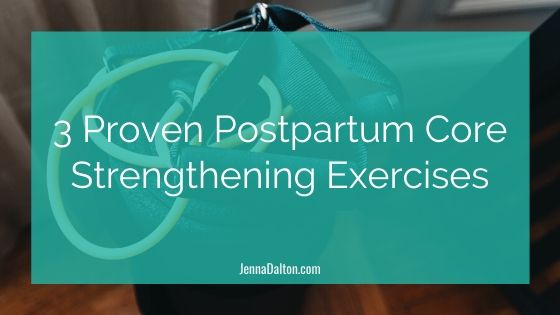
A common piece of advice given to women who are newly postpartum or managing diastasis recti or prolapse is to avoid crunches, sit-ups, planks and other more traditional core exercises.
The idea is that these kinds of exercises create a lot of pressure into the core and pelvic floor (which is obviously not the best thing for a recovering muscle system).
And while they can create a lot of pressure, so can a squat or an overhead press. So it’s not just about avoiding traditional core exercises.
And honestly?
It’s often more about how you’re doing the exercise than what you’re doing in the first place.
And many moms – with the right strategies under their belt – can experiment with things like crunches, V-sits and planks. Even if they have diastasis or prolapse.
Again, strategy and the right approach is key here.
But even with the right strategies, I wouldn’t recommend a new mom do full V-sits at 6 weeks postpartum.
I’d rather help my clients rebuild their core strength with some simple, powerful exercises first. Exercises like the pallof press.
I like the pallof press – especially for newly postpartum moms – because it’s easy to adjust the intensity or challenge of the movement, it’s a very functional movement (it looks a lot like movements we do in every day life) and it’s often easy to get a great core engagement strategy going on throughout the movement.
There are 3 things you’ll want to keep in mind while you’re doing your pallof presses:
- The idea is to avoid rotating your body. Remember, the strengthening part comes from you resisting the urge to rotate so keep your body facing forward.
- Especially if you’re newer postpartum, I want you to exhale and engage your core and pelvic floor before you press your arms out. This will help protect your core and pelvic floor and help your brain reconnect with your core system (so your core and floor turn on when they’re supposed to).
- Breathe. It’s easy to hold your breath during core movements. Especially if you have a tendency to want to brace your abs tightly. So tightly that you can’t breathe. I like a nice long exhale as I push my arms out.
Like I mentioned before, I love pallof presses because it’s super easy to adjust how challenging the movement is.
For less of a challenge…
- Do your pallof presses from a half-kneeling position (like you’re down on one knee about to propose) or tall kneeling position (up on both knees with your thighs and upper body in one straight line, shins parallel with the floor)
- Use a lighter-weight resistance band
- Move closer to where you have the band anchored
- And/or don’t do as many reps or sets
For more of a challenge…
- Do your pallof presses standing
- Use a heavier-weight resistance band
- Move further away from where you have the band anchored
- Use a cable machine instead of a resistance band and choose a challenging weight
- And/or do more reps or sets
If you’re newer postpartum, start slow.
I know you were strong pre-baby and could whip through core exercises like a pro. But remember, your body is different now. And that’s okay. You will feel strong again. But let’s not push it right out of the gate, okay?
Now here are 3 pallof press variations I love to incorporate into my and my client’s workouts to help mix things up and keep that core guessing so it gets stronger and stronger…
Did you give them a try?
What was your favourite? Let me know in the comments below. I’d love to hear from you.
And remember, just because it doesn’t look like much, doesn’t mean your body isn’t working hard.
This simple move can actually be incredibly challenging and very effective for strengthening your core.
So give it a go and let me know what you think in the comments below.
❤️Jenna
P.S. Have a mom friend who could use some new core exercise ideas in her life? Send her this post. Thank you for sharing!
Leave a Reply